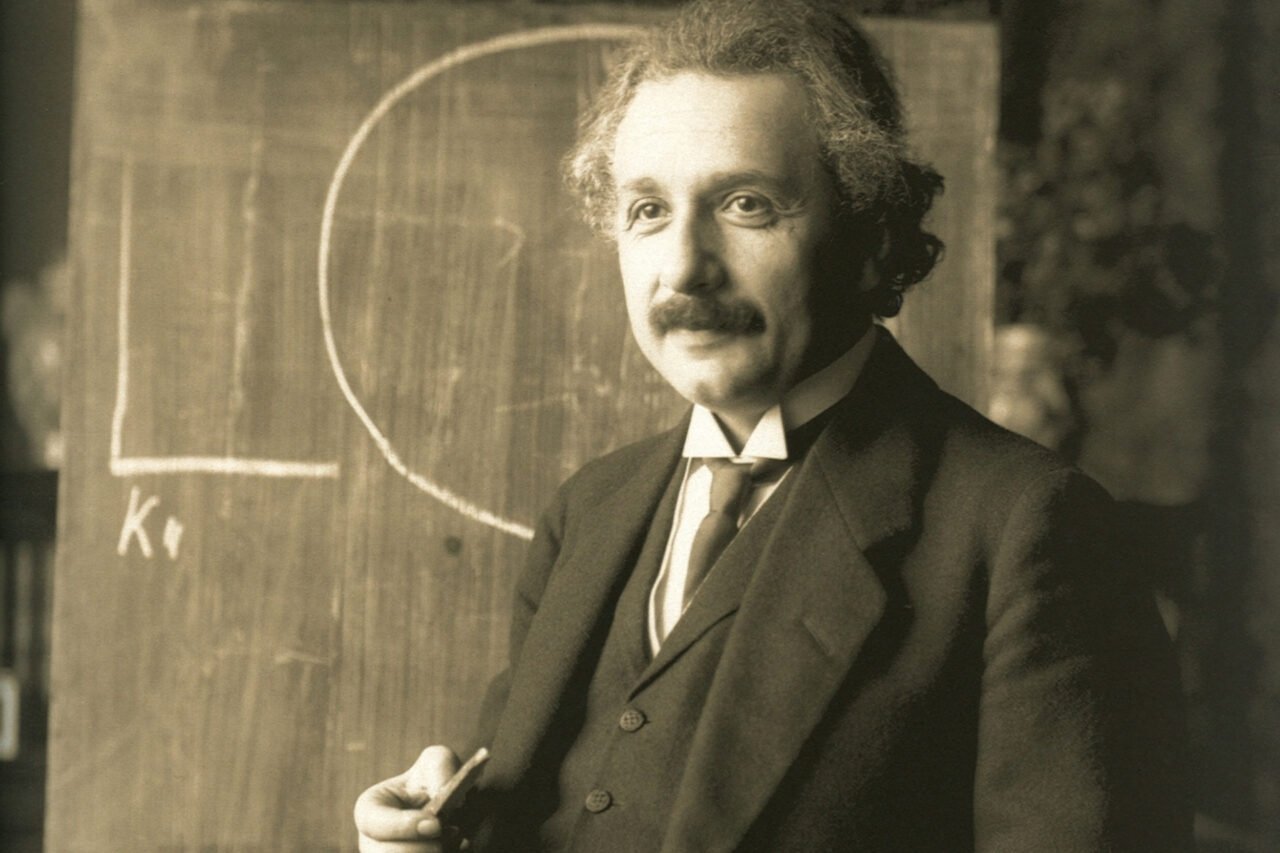Science
Einstein’s Missteps: Six Predictions That Shaped Physics

Albert Einstein, celebrated as one of the most influential physicists in history, made groundbreaking contributions to our understanding of spacetime. Yet, his journey was not without its miscalculations. Throughout his career, Einstein made several predictions that later proved to be inaccurate or incomplete. Examining these missteps provides insight into the complexities of scientific inquiry and the evolution of physics.
Gravitational Waves: A Misjudgment
In 1916, Einstein’s general theory of relativity predicted the existence of gravitational waves—ripples in spacetime that would travel across the universe. This prediction was confirmed in 2015 by the LIGO Collaboration, which detected these waves for the first time. Despite this eventual validation, Einstein himself expressed skepticism about their existence in a 1936 paper co-authored with Nathan Rosen. He concluded that the mathematical framework he employed was flawed, stating, “I arrived at the interesting result that gravitational waves do not exist.” His initial doubts and subsequent revisions highlight the iterative nature of scientific exploration.
Quantum Entanglement: The EPR Paradox
Einstein’s relationship with quantum mechanics was marked by a profound ambivalence. While he contributed significantly to the field, particularly through the explanation of the photoelectric effect, he remained unconvinced by some of its implications, such as quantum entanglement. In a 1935 paper co-written with Rosen and Boris Podolsky, he articulated the EPR Paradox, arguing that if entanglement were true, it would imply “elements of the physical reality” that must be confirmed through experiments. Despite Einstein’s concerns, subsequent experimental work has shown that entangled particles can indeed influence each other instantaneously, challenging his assertion that a deeper theoretical framework is necessary.
The Quest for Unification
For the final three decades of his life, Einstein dedicated himself to developing a unified theory of physics, aiming to merge gravitational and electromagnetic forces without relying on quantum mechanics. He viewed quantum mechanics as arbitrary and sought to establish a cohesive framework that would encompass all physical phenomena. While he failed to achieve this goal, his efforts popularized the concept of unification, which remains a driving ambition in modern physics. The American Physical Society now refers to this pursuit as the “holy grail” of the discipline.
Static Universe vs. Expansion
Einstein’s belief in a static universe led him to introduce the cosmological constant into his equations, a mathematical adjustment intended to counteract gravitational attraction. This concept was later dismissed by Einstein himself as an arbitrary addition. Ironically, the cosmological constant was revived in the 1990s as a crucial component in the explanation of dark energy, which suggests that the universe is expanding at an accelerating rate. This shift in understanding underscores the evolving nature of cosmological theories.
Black Holes: A Rejection of Singularities
Einstein’s views on black holes were notably skeptical. In 1939, he rejected the existence of these enigmatic entities, which general relativity seemed to predict. His mathematical approach led him to consider black holes as an “unimaginable misfortune” for theoretical physics. He believed that singularities disrupted the coherence of mathematical models, asserting that they introduced too much arbitrariness into the theory. Modern research, including findings from the Event Horizon Telescope, has since provided a clearer understanding of black holes, suggesting that Einstein’s initial reservations may have been premature.
Indeterminism and the Dice of God
Einstein famously stated, “God does not play dice with the universe,” reflecting his discontent with the randomness inherent in quantum mechanics. He fundamentally believed that the universe operates according to deterministic laws, and he sought a deeper understanding that could eliminate the apparent randomness. This perspective fueled his desire for a unified physical theory, demonstrating his commitment to uncovering a consistent framework for understanding reality.
In retrospect, Einstein’s miscalculations and subsequent revisions of his theories illustrate the complex nature of scientific progress. His willingness to question his own theories not only enriched the field of physics but also sparked ongoing debates that continue to inspire scientists today. As historian John D. Norton notes, predicting Einstein’s next steps is often challenging, and his legacy serves as a reminder of the dynamic and evolving nature of scientific inquiry.
-

 Science2 weeks ago
Science2 weeks agoIROS 2025 to Showcase Cutting-Edge Robotics Innovations in China
-

 Politics2 weeks ago
Politics2 weeks agoJudge Considers Dismissal of Chelsea Housing Case Citing AI Flaws
-

 World2 weeks ago
World2 weeks agoBravo Company Veterans Honored with Bronze Medals After 56 Years
-

 Top Stories2 weeks ago
Top Stories2 weeks agoIndonesia Suspends 27,000 Bank Accounts in Online Gambling Crackdown
-

 Lifestyle2 weeks ago
Lifestyle2 weeks agoStone Island’s Logo Worn by Extremists Sparks Brand Dilemma
-

 Health2 weeks ago
Health2 weeks agoStartup Liberate Bio Secures $31 Million for Next-Gen Therapies
-

 Sports2 weeks ago
Sports2 weeks agoMel Kiper Jr. Reveals Top 25 Prospects for 2026 NFL Draft
-

 Health2 weeks ago
Health2 weeks agoTop Hyaluronic Acid Serums for Radiant Skin in 2025
-

 World2 weeks ago
World2 weeks agoHoneywell Predicts Record Demand for Business Jets Over Next Decade
-

 Lifestyle2 weeks ago
Lifestyle2 weeks agoMary Morgan Jackson Crowned Little Miss National Peanut Festival 2025
-

 Politics2 weeks ago
Politics2 weeks agoNew Jersey Voters Urged to Register Ahead of November Election
-

 Sports2 weeks ago
Sports2 weeks agoYamamoto’s Mastery Leads Dodgers to 5-1 Victory in NLCS Game 2









